Seasonal Self Care
It’s easy to feel behind or like there’s never enough time to do it all. Embracing the seasons reminds us that there’s a time for everything – there is truly no need to fret about all of it when you can rest knowing that the seasons will come and go.

Each season has its own beauty, challenges, and wisdom. In a world that often feels disconnected from the natural flow of life, aligning with these seasonal rhythms can be a powerful act of self-care. By honoring these cycles, we not only nurture our own well-being but also pass down a reverence for nature’s wisdom to future generations.
Spring: Awakening & Renewal
As plants begin to reemerge and the days get longer, spring offers a fresh start. It’s a season of rebirth, inviting us to shake off winter’s dormancy.

- Detox Rituals: Start your mornings with warm lemon water to cleanse the system.
- Nature Walks: Explore blooming gardens or local parks to connect with spring’s resurgence.
- Journaling: Set intentions for the coming months, harnessing spring’s energy of new beginnings.
- Fresh Nutrition: Incorporate seasonal fruits and veggies like strawberries, asparagus, and spinach into your diet.
- Skincare Routine: Exfoliate to remove winter’s dry skin and hydrate with lighter, nourishing creams.
- Open Windows: Air out living spaces, inviting in fresh air and the song of returning birds.
- Mindful Gardening: Plant flowers or herbs, nurturing growth with your hands.
- Rain Meditation: Listen to the spring rain, allowing it to cleanse the mind.
- Decluttering: Clear out winter’s accumulation, creating space in your environment.
- Dawn Yoga: Salute the sun as days lengthen, synchronizing your body with nature’s rhythm.
Summer: Radiance & Activity
We welcome a surge of light and warmth, summer beckons us outdoors, urging us to embrace its vibrant energy.

- Outdoor Workouts: Beach yoga, forest hiking, or park pilates.
- Hydration: Infuse water with fresh fruits like watermelon or cucumber.
- Picnic Meditations: Practice mindfulness while savoring summer treats outdoors.
- Sunrise or Sunset Rituals: Begin or end the day basking in summer’s golden hues.
- Digital Detox: Spend a day unplugged, fully immersing in the world around.
- Berries & Greens: Embrace antioxidant-rich summer berries and fresh salads.
- Natural Skincare: Use cooling aloe vera or DIY fruit masks.
- Starry Night Reflection: Gaze at the stars, contemplating your place in the universe.
- Dance in the Rain: Embrace summer showers with joyful spontaneity.
- Creative Pursuits: Sketch, paint, or write, inspired by summer’s vibrancy.
Autumn: Release & Preparation
As leaves change to golden and fall from the trees, autumn teaches us the art of letting go and the beauty of transition.

- Warm Beverages: Sip on warm broth or ginger tea.
- Leafy Walks: Crunch through fallen leaves, observing nature’s color palette.
- Harvest Cooking: Create meals with root vegetables and autumnal spices.
- Gratitude Journaling: As the year winds down, note blessings and lessons.
- Candlelit Evenings: Cozy up with candles, reflecting on the year’s transitions.
- Crafting: Knit, crochet, or engage in DIY crafts as evenings grow longer.
- Wardrobe Rotation: Shift to warmer clothes, decluttering as you go.
- Meditative Baths: Infuse baths with autumnal scents like cinnamon and apple.
- Forest Meditation: Engage with the serene energy of woods preparing for winter.
- Moon Gazing: Connect with the beauty of clear, crisp autumn nights.
4. Winter: Rest & Reflection
Plants + animals alike go dormant – it’s time to rest.

- Cozy Reading: Dive into books by the warmth of a fireplace or heater.
- Nourishing Soups: Prepare broths and stews to warm from within.
- Guided Visualization: Envision snowy landscapes or the return of spring.
- Skin Hydration: Combat dryness with richer creams and moisturizing masks.
- Indoor Plant Care: Tend to houseplants, maintaining a connection with nature.
- Dream Journaling: As nature rests, record and interpret your dreams.
- Crafting Gifts: Handmake presents for loved ones, infusing them with personal energy.
- Snowy Silences: If in a snowy area, enjoy the hushed peace after snowfall.
- Yoga & Stretching: Maintain flexibility during the colder months.
- Candle Rituals: Light candles, setting intentions for the coming year.
Remember, the essence of seasonal self-care lies not in rigidly following practices but in aligning with nature’s tempo, ensuring that our bodies, minds, and souls resonate harmoniously with the world around.
Traditional Seasonal Self Care
The concept of seasonal self-care has deep roots in various ancient cultures and wisdom traditions. By aligning their lifestyles with the rhythms of nature, our ancestors intuitively understood the interdependence of humans and the natural world. Here’s a glimpse into the historical wisdom behind seasonal self-care:
1. Traditional Chinese Medicine (TCM) & Five Elements Theory:
- TCM recognizes five seasons: spring, summer, late summer, autumn, and winter, each associated with a specific element (wood, fire, earth, metal, water, respectively).
- Each season corresponds to specific organs and emotions. For instance, spring (wood) relates to the liver and feelings of anger. By understanding these associations, one could adjust diet, activities, and even meditations to maintain balance.
2. Ayurveda:
- This ancient Indian system of medicine divides the year based on the dominance of doshas (life energies): Vata (fall and early winter), Kapha (late winter and spring), and Pitta (summer).
- Seasonal routines, called “Ritucharya,” prescribe specific diets, activities, and therapies to align with these shifts and maintain internal balance.
3. Ancient Egyptian Wisdom:
- Egyptians, tied to the cycles of the Nile River, had a deep reverence for the Sun and its annual journey. Seasonal festivals celebrated different aspects of life, death, and rebirth.
- Their practices included seasonal diets, rituals, and even beauty routines that aligned with the cycles of nature.
4. Native American Traditions:
- Tribes across North America had a profound connection to the land and its seasons. They recognized the rhythms of nature and aligned their hunting, agriculture, and spiritual rituals accordingly.
- Vision quests, ceremonies, and communal celebrations often coincided with significant seasonal transitions.
5. Ancient Greek Philosophy:
- Greeks believed in the harmony of the cosmos (order and balance). They celebrated various seasonal festivals like Thesmophoria (autumn) and Haloa (winter) to honor deities and the cyclic nature of life.
- Hippocrates, the father of medicine, emphasized the importance of seasonal foods and activities for maintaining health.
6. Norse Traditions:
- The Norse had seasonal festivals such as Yule (midwinter) and Ostara (spring) that celebrated the shifting balance between darkness and light.
- They recognized the importance of adjusting activities and diet based on the season. Winter was a time for storytelling and reflection, while summer was for exploration and expansion.
While modern living often detaches us from these natural rhythms, the wisdom of our ancestors reminds us of the inherent connection between our well-being and the cycles of nature.
Embracing seasonal self-care is a reclamation of ancient knowledge, a nod to traditions that viewed health and well-being as deeply intertwined with the dance of the seasons.
Self Care for Seasonal Affective Disorder
Seasonal Affective Disorder (SAD) is a type of depression that occurs at specific times of the year, usually during the fall and winter months when daylight is reduced. Addressing SAD holistically, in the spirit of nurturing the self, can be deeply healing. Here are some self-care strategies that echo a conscious approach to wellness:
1. Light Therapy:
- Expose yourself to a bright light, specifically designed for SAD treatment, for about 20-30 minutes each day. These light boxes mimic natural sunlight and can help regulate mood-enhancing chemicals in the brain.
2. Nature Connection:
- Even in colder months, try to get outside during daylight hours. A simple walk, absorbing whatever sunlight is available, can make a difference.
- If you’re indoors, position furniture near windows to maximize natural light exposure.
3. Maintain Rhythms:
- Keep a regular sleep schedule. Going to bed and waking up at the same time daily can help regulate your body’s internal clock.
4. Nourish with Intent:
- Embrace a balanced diet with mood-boosting nutrients like Omega-3 fatty acids, Vitamin D, and B vitamins.
- Avoid overconsumption of caffeine and sugar, which can exacerbate mood swings.
5. Movement Meditation:
- Exercise has been shown to help alleviate symptoms of SAD. Find a physical activity you enjoy—whether it’s yoga, dancing, or walking.
- Think of movement as a meditative practice, where you’re not only working the body but also nurturing the mind.
6. Mindful Activities:
- Engage in mindfulness practices like meditation or deep breathing exercises to combat stress and maintain emotional equilibrium.
7. Luxurious Introspection:
- Use the inward nature of winter to dive deep into personal reflection. Journaling can be a tool for understanding and processing emotions.
8. Aromatherapy:
- Scents like lavender, bergamot, and chamomile can be calming. Consider diffusing essential oils or using them in baths to uplift your mood.
9. Stay Socially Connected:
- Even if you feel like retreating, maintain connections with loved ones. Social interactions, even if virtual, can offer emotional support.
10. Professional Guidance:
- Consider talking to a therapist or counselor. They can offer coping techniques tailored to your needs.
- Some people benefit from cognitive-behavioral therapy (CBT) specifically tailored for SAD or even medication.
11. Embrace Creativity:
- Engage in creative outlets like painting, writing, or crafting. These can serve as therapeutic channels for expression.
12. Vitamins and Supplements:
- Discuss with a healthcare provider about potential benefits of taking Vitamin D or other supplements to support mood.
Remember, it’s essential to recognize that everyone’s experience with SAD is unique. What might work for one person may not necessarily work for another. Embrace the journey of finding what resonates with you, offering not only relief from symptoms but also a deeper connection with your own well-being.


